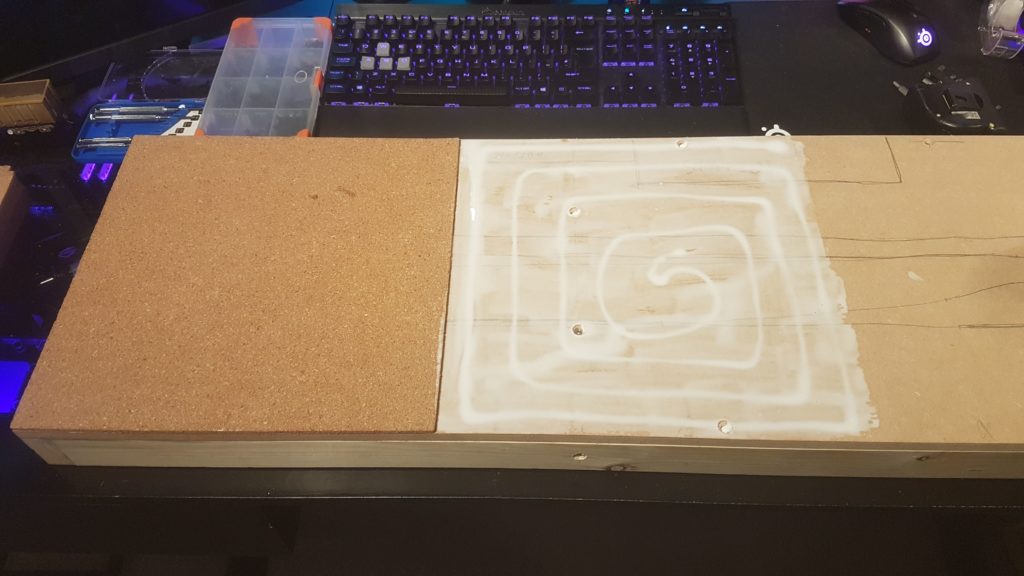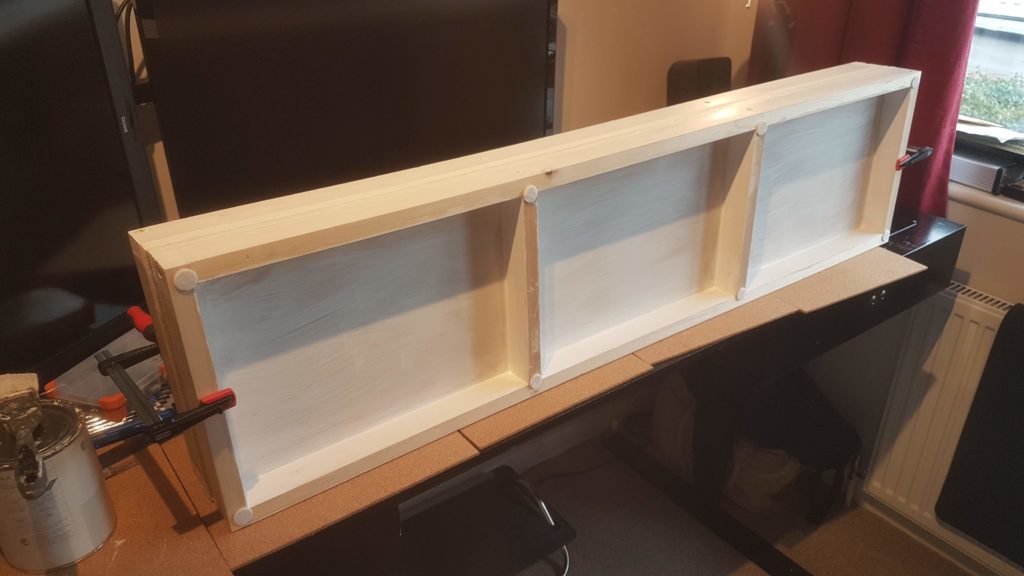Before track planning can begin in earnest, the baseboard needs to be covered in cork. This will help to isolate sound a little, which will be required since the track will be glued rather than pinned.
Before starting, I removed each piece of the frame, glued it and re-attached it. This extra strength might pay off later. I also gave the sides and underneath a coat of primer, mainly to stop the nasty MDF smell.

For the cork, I chose bathroom tiles instead of the more typical roll of cork sold in model shops. Whilst not so popular these days, these used to be used a lot for bathroom floors. You can find packs of them on eBay for about £20 for 16 tiles. I find these are easier to work with than the roll, as it is not constantly fighting you and trying to curl up!
Glueing the tiles down was a simple process, I worked from left to right across the baseboard, laying one tile at a time using standard PVA glue. Since the boards are slightly longer than 1200mm, I inserted a thing strip between tiles 3 and 4. I also ran a 5mm strip along the back edge, as the MDF was actually cut slightly oversize when it was purchased.

Once all 8 tiles were down, the baseboards were clamped together and left to dry for a couple of hours.